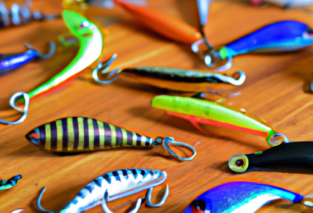In the world of trout fishing, there is one crucial aspect that can make or break your fishing experience – the fishing line. Finding the perfect balance of line capacity and best practices is essential to ensure a successful trout fishing trip. From understanding the right line capacity for different types of trout to learning the best practices for handling and maintaining your fishing line, this article will equip you with the knowledge you need to enhance your fishing skills and reel in those prized trout. So, grab your fishing rod, sit back, and let’s explore the fascinating world of trout fishing line!
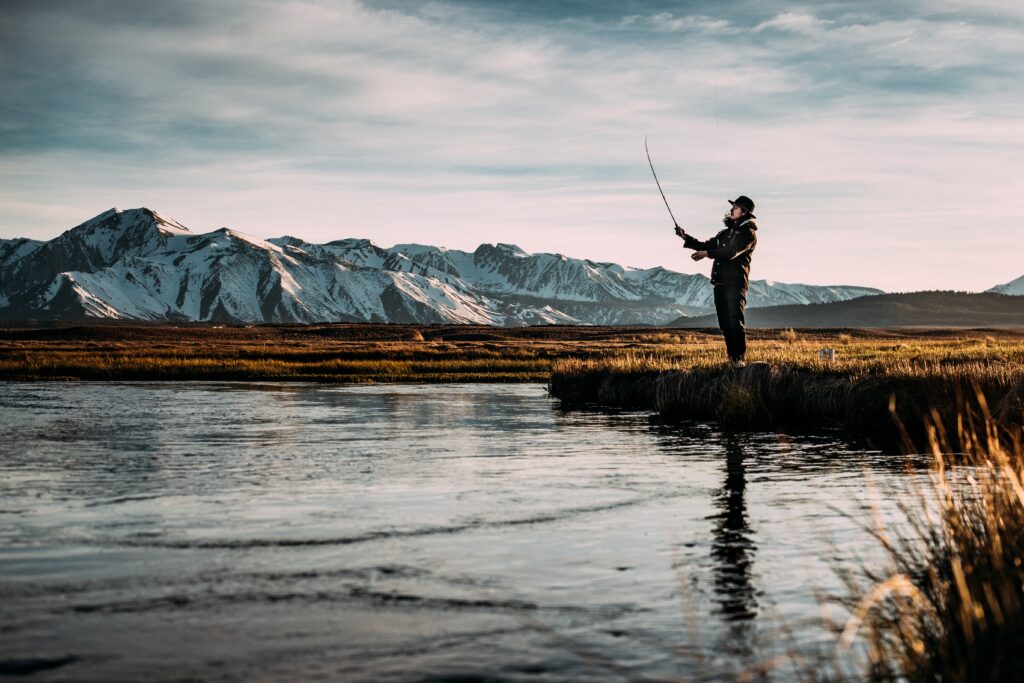
Choosing the Right Fishing Line
When it comes to trout fishing, one of the most crucial decisions you’ll have to make is choosing the right fishing line. The fishing line you use plays a significant role in determining your success on the water. It not only affects your casting distance and accuracy but also influences how well you can detect bites and land those prized trout. With a myriad of options available, it’s important to consider various factors to make an informed decision.
Factors to Consider
Before diving into the different types of fishing lines, it’s essential to consider a few key factors. The type of water you’ll be fishing in, the trout species you’re targeting, and the angling conditions you’ll be facing are all elements that should guide your decision. Additionally, the rod you’ll be using and your personal preferences also play a role in choosing the right fishing line. By taking these factors into account, you’ll be better equipped to choose the line that suits your needs.
Monofilament Vs. Fluorocarbon
Monofilament and fluorocarbon are two commonly used fishing lines in trout fishing. Monofilament is a versatile and affordable option, making it popular among anglers. It offers good knot strength, easy handling, and excellent buoyancy, which can be advantageous in certain fishing situations. On the other hand, fluorocarbon line is known for its invisibility in the water, making it an excellent choice when targeting wary trout. It also boasts impressive strength and low stretch, enhancing sensitivity. Consider the specific characteristics of each line type and how they align with your fishing style and the conditions in which you’ll be fishing.
Braid Vs. Monofilament Vs. Fluorocarbon
In addition to monofilament and fluorocarbon, braid is another fishing line option to consider for trout fishing. Braid consists of multiple strands of synthetic fibers, resulting in a small-diameter but high-strength line. It offers excellent sensitivity, allowing you to feel even the most subtle bites. However, its high visibility in the water may be a disadvantage when targeting finicky trout. When choosing between these three types of fishing lines, keep in mind their specific characteristics, such as strength, visibility, and sensitivity, and how they align with your fishing goals.
Determining Line Capacity
Understanding line capacity is crucial in ensuring you have the appropriate amount of line on your reel for trout fishing. Line capacity refers to the amount of fishing line that can be spooled onto your reel without exceeding its recommended limits. Having the right line capacity is essential for casting distance, managing line during a fight, and preventing any potential line breakage.
Understanding Line Capacity
Line capacity is measured in yards or meters and is specified by reel manufacturers for each reel model. It is crucial to know the line capacity of your reel to avoid any complications while out on the water. Insufficient line capacity can limit your casting distance and potentially lead to a lost fish, while excessive line capacity can result in line tangles and reduced reel performance. By understanding the line capacity of your reel, you can make informed decisions when spooling your fishing line.
Factors Affecting Line Capacity
Several factors can affect the line capacity of your reel. The type and diameter of the fishing line you choose, as well as the presence of any backing line, can all impact the amount of line your reel can hold. Additionally, the specific trout species you’re targeting and the fishing techniques you’ll be using can also influence your line capacity requirements. It’s important to consider these factors collectively to ensure you have the right amount of line on your reel for any angling situation.
Calculating Line Capacity
To determine the line capacity for your reel, you can consult the manufacturer’s specifications or use a simple formula. The formula for calculating line capacity is as follows:
Line Capacity (in yards) = (Reel Diameter × Reel Width × Line Retrieve Ratio) / Line Diameter.
By plugging in the necessary values, such as the reel diameter, reel width, line retrieve ratio, and line diameter, you can calculate the line capacity of your reel. This calculation will give you a general idea of the maximum amount of line your reel can hold, allowing you to make an informed decision when spooling your fishing line.
Best Practices for Trout Fishing
Trout fishing requires careful consideration of various factors to increase your chances of success on the water. From line capacity to rod power, every component plays a vital role in optimizing your fishing experience. By following these best practices, you can ensure you’re well-prepared for your next trout fishing adventure.
Line Capacity for Trout Fishing
When it comes to trout fishing, having the right line capacity is crucial. Since trout are known for their fighting abilities and agility, it’s important to have enough line to accommodate their powerful runs and maneuvers. Aim for a line capacity that allows you to make long casts while still leaving enough line on the spool to handle any sudden bursts of speed or acrobatics from the trout. Adequate line capacity provides you with the flexibility to handle various fishing scenarios and increases your chances of successfully landing trout.
Matching Line Capacity to Rod Power
Another important consideration in trout fishing is matching your line capacity to the power of your fishing rod. Different rod powers are designed to handle varying line weights and lure sizes. It’s crucial to ensure your line capacity is suitable for the specific rod power you’re using. Using a line that is too heavy for your rod can result in poor casting performance and potential rod damage. Conversely, using a line that is too light may limit your ability to cast long distances or control larger trout. By finding the right balance between line capacity and rod power, you can optimize your fishing setup and increase your chances of success.
Considering Trout Species
Trout species often have different characteristics and behavior patterns, and these differences should be taken into account when choosing your line capacity. For example, larger trout species, such as steelhead or lake trout, may require more line capacity due to their significant size and power. Additionally, if you’re targeting trout in snag-prone areas or fishing in heavily vegetated waters, you may need extra line capacity to handle potential obstacles and prevent break-offs. By considering the specific trout species you’ll be pursuing, you can tailor your line capacity to their unique traits and enhance your chances of landing your desired catch.
Adjusting Line Capacity for Angling Conditions
The angling conditions you’ll be facing also play a role in determining your line capacity. In scenarios where you’ll be fishing in clear, low-visibility water, having a higher line capacity can be advantageous. This allows you to make longer casts and keep your fishing line farther away from potentially spooked trout. On the other hand, if you’ll be fishing in turbid or stained waters, where trout may rely more on their sense of smell or vibration detection, a slightly lower line capacity may be sufficient. By considering the specific angling conditions you’ll be encountering, you can fine-tune your line capacity to maximize your chances of success.
Line Diameter and Pound Test
Understanding the relationship between line diameter and pound test is crucial in selecting the right fishing line for trout fishing. The line diameter refers to the thickness of the fishing line, while the pound test indicates the maximum amount of weight the line can withstand before breaking. Choosing the right line diameter and pound test is vital for successful trout fishing.
Understanding Line Diameter and Pound Test
Line diameter and pound test go hand in hand when it comes to selecting the appropriate fishing line. Generally, thinner lines have smaller diameters and are less visible in the water. This can be advantageous when targeting wary trout in clear, calm waters. Conversely, thicker lines have larger diameters and may be more visible to trout. However, they typically offer greater strength and abrasion resistance, making them more suitable for fishing in snag-prone areas or around structure.
Pound test refers to the maximum weight in pounds that the fishing line can handle before breaking. It’s important to choose the right pound test for your trout fishing needs. A line with a higher pound test will offer more strength and durability, allowing you to handle larger trout or fish in challenging conditions. However, keep in mind that increasing pound test usually means sacrificing sensitivity and finesse. Therefore, consider the size and species of trout you’ll be targeting, as well as the fishing conditions, to determine the appropriate pound test for your fishing line.
Impact of Line Diameter on Fishing
The line diameter directly affects various aspects of your trout fishing experience. Thinner lines with smaller diameters offer less resistance in the water, allowing for longer and more accurate casts. They also have less visibility, which can be beneficial when targeting skittish trout. Thinner lines can also provide enhanced sensitivity, allowing you to detect even the slightest bites or changes in the underwater environment.
Thicker lines with larger diameters, on the other hand, offer increased strength and durability. They are better suited for fishing in areas with potential snags or rocky bottoms, where a higher pound test and abrasion resistance are essential. However, thicker lines may sacrifice some casting distance and sensitivity.
Balancing line diameter and pound test is crucial in selecting the right fishing line for trout fishing. Consider the specific fishing conditions, the size and behavior of the trout species you’re targeting, and your personal preferences to find the optimal combination of line diameter and pound test.
Choosing the Right Pound Test for Trout Fishing
Selecting the appropriate pound test for trout fishing depends on various factors, such as the size of the trout species you’ll be targeting, the fishing location, and the fishing techniques you’ll be using. As a general guideline, lighter fishing lines in the 2 to 6-pound test range are suitable for smaller trout species and finesse fishing techniques. Medium-weight lines in the 6 to 10-pound test range are versatile and often used for a variety of trout fishing scenarios. Heavy lines in the 10 to 15-pound test range are better suited for larger trout species or fishing in snag-prone areas. Always consider the specific fishing conditions and adjust the pound test accordingly to ensure you’re using the appropriate fishing line for trout fishing.
Techniques for Spooling Fishing Line
Properly spooling your fishing line is essential to ensure optimal performance and minimize potential issues such as line tangling or twisting. By following these techniques, you can maintain the integrity of your fishing line and enhance your trout fishing experience.
Ensuring Proper Line Spooling
Before spooling your fishing line, it’s important to ensure that your reel is clean and in good condition. Remove any old or damaged line and inspect the reel for any signs of wear or corrosion that may affect the performance of your new line. The next step is to attach the line to the reel. Start by tying a secure knot to the reel spool, such as an arbor knot or a uni knot. Once the line is secured, slowly spool the line onto the reel, keeping tension on the line to prevent loose wraps and potential line tangles.
Using Line Backing
Line backing is a thin, strong line that is often used as a foundation when spooling fishing line. It serves several purposes, such as filling up the reel’s arbor, adding line capacity, and improving casting distance. When using line backing, attach it to the reel spool following the same process as attaching the main fishing line. Once the backing line is securely attached, proceed to spool the main fishing line onto the reel, ensuring that the backing line is evenly distributed across the width of the reel spool.
Preventing Line Twist
Line twist is a common issue that can affect the performance of your fishing line and cause tangles and knots. To prevent line twist, it’s important to spool the line onto your reel correctly. As you spool the line, make sure it is coming off the supply spool in the same direction as it is being wound onto the reel. Also, periodically check for any twists or loops in the line as you spool it. If you notice any twists, stop and allow the line to untwist itself or manually correct them. Taking your time and being mindful of line twist during the spooling process will help minimize any potential issues while trout fishing.
Choosing the Right Line Length
The length of your fishing line plays a role in determining your casting distance, line management, and overall fishing experience. Choosing the right line length is vital for optimized performance and success on the water.
Factors to Consider for Line Length
When determining the appropriate line length, consider the type of fishing you’ll be doing and the specific fishing conditions. For trout fishing, a common practice is to have the line length approximately equal to the length of your fishing rod. This provides a good balance between casting distance and line control. However, certain situations may call for longer or shorter lines. If you’ll be fishing in open waters or targeting trout that are actively feeding on the surface, longer line lengths may be advantageous for making longer casts and keeping the line away from wary trout. Conversely, when fishing in tight spaces or areas with overhanging vegetation, shorter line lengths can prevent line tangles and facilitate accurate casting.
Matching Line Length to Fishing Conditions
The fishing conditions you’ll be facing also influence the ideal line length. Factors such as wind, water clarity, and the behavior of the trout can impact your line length requirements. In windy conditions, for example, a longer line length can help you achieve better casting accuracy and control. In clear water, where trout may be more easily spooked, a longer line length can keep your line farther away from the fish. On the other hand, in murky or stained waters, where trout rely more on other senses such as vibration or smell, a shorter line length may suffice. By considering the specific fishing conditions, you can adjust your line length accordingly and optimize your trout fishing experience.
Replacing Fishing Line
Over time, fishing line can wear out due to factors such as sun exposure, abrasion, and general wear and tear. Recognizing when to replace your fishing line is crucial to maintain optimal performance and prevent any potential issues during your trout fishing adventures.
Signs of Wear and Tear
Inspecting your fishing line regularly is the key to identifying signs of wear and tear. Common signs that indicate your fishing line may need replacing include visible nicks or cuts, fraying or fuzziness, and discoloration. These signs can weaken the line’s strength and integrity, increasing the likelihood of break-offs or line failure. Additionally, if you notice any significant memory or coiling in your line that cannot be resolved by stretching or straightening it, it may be an indication that the line has reached the end of its lifespan.
When to Replace Fishing Line
Determining when to replace your fishing line depends on several factors, including the frequency of use, fishing conditions, and overall line performance. As a general guideline, it is recommended to replace your fishing line at least once a season or every 12 to 18 months. However, if you frequently fish in rugged or abrasive environments, or if you notice any significant signs of wear and tear, you may need to replace your line more often. It’s important to trust your judgment and prioritize line performance and safety when considering whether to replace your fishing line.
Proper Techniques for Replacing Line
Replacing your fishing line involves several key steps to ensure a smooth and effective transition. Begin by removing the old line from your reel, then clean and inspect the reel for any signs of damage or wear. Once the reel is ready, attach the new fishing line to the reel spool using a secure knot. Slowly spool the new line onto the reel, ensuring even tension and avoiding any twists or tangles as you go. Once fully spooled, cut the line to the desired length, and attach your leader and terminal tackle as required. By following these proper techniques for replacing fishing line, you can maintain optimal line performance and prepare for your next trout fishing adventure.
Retrieving and Maintaining Fishing Line
Proper techniques for retrieving and maintaining your fishing line are essential to maximizing its lifespan, optimizing performance, and preventing any potential issues during your trout fishing endeavors. By following these guidelines, you can ensure the longevity and functionality of your fishing line.
Proper Techniques for Retrieving Fishing Line
When retrieving your fishing line, it’s important to do so in a controlled and consistent manner to minimize line twist and potential tangles. Avoid reeling in too quickly or with erratic motions, as this can result in line twisting. Instead, reel in smoothly and at a moderate pace, keeping tension on the line to maintain control and detect any strikes or bites. By practicing proper retrieval techniques, you can reduce the risk of line twist and maintain optimal line performance.
Maintaining and Extending Line Lifespan
Maintaining your fishing line is crucial in prolonging its lifespan and ensuring optimal performance. After each fishing outing, it’s important to inspect your line for any signs of wear or damage. Run your fingers along the entire length of the line, feeling for any abnormalities such as nicks, abrasions, or rough spots. If you notice any issues, consider replacing the affected section or the entire line before your next fishing trip.
To extend the lifespan of your fishing line, it’s recommended to rinse it with freshwater after every use. This removes any salt, sand, or debris that may have accumulated during your fishing outing. Additionally, avoid storing your fishing line in direct sunlight or extreme temperatures, as these conditions can degrade the line’s strength and overall performance. By regularly inspecting and maintaining your fishing line, you can maximize its lifespan and ensure optimal performance during your trout fishing adventures.

Avoiding Line Tangles and Knots
Nothing is more frustrating than dealing with line tangles and knots while trout fishing. However, by taking preventive measures and employing proper techniques, you can minimize the occurrence of tangles and prevent any potential frustrations on the water.
Common Causes of Tangles and Knots
There are several common causes of line tangles and knots that should be avoided. One of the primary causes is improper line spooling, which can result in line twist and increased chances of tangles. Other factors include casting with loose or tangled line, improper casting techniques, and using overly weak or worn-out fishing line. It’s also important to be mindful of wind conditions and potential obstructions in the water that may cause your line to tangle. By understanding the common causes of tangles and knots, you can take proactive steps to prevent them.
Preventive Measures to Avoid Tangles
Preventing line tangles and knots begins with proper line spooling and ensuring that your reel is clean and in good condition. Avoid overfilling your reel with excessive line, as it can lead to tangles and reduced casting performance. When casting, make sure your line is free of any knots or kinks and that it is not tangled in any way. Employ proper casting techniques, such as using smooth, fluid motions, and keeping your line under control throughout the cast. By exercising caution and taking preventive measures, you can significantly reduce the likelihood of line tangles and knots.
Untangling Line Knots
In the unfortunate event that you do encounter a line tangle or knot, it’s important to approach the situation with patience and care. Begin by gently untangling the knot or tangle using your fingers or a small tool. If the knot is particularly tight or complex, consider cutting it out and retying your line. It’s crucial to avoid pulling on the line forcefully, as this can exacerbate the situation and potentially damage your fishing line. By remaining calm and employing proper untangling techniques, you can quickly resolve any line tangles and continue enjoying your trout fishing experience.
Tips for Line Storage and Maintenance
Proper line storage and maintenance are essential to ensure the longevity and performance of your fishing line. By following these simple tips, you can prevent unnecessary line damage, deterioration, and potential issues during your trout fishing endeavors.
Storing Fishing Line Properly
When it comes to storing your fishing line, it’s important to keep it in a cool, dry place away from direct sunlight or extreme temperatures. Exposure to excessive heat or sunlight can weaken the line over time, reducing its strength and overall performance. Consider storing your fishing line in a dark, climate-controlled room or tackle box to protect it from any potential damage.
To further protect your fishing line, consider using a line spooler or line winder for proper storage. These tools can prevent the line from unravelling and tangling, ensuring that it remains in optimal condition until your next fishing trip. Alternatively, you can use line retention devices, such as rubber bands or Velcro straps, to secure the line to the reel spool and prevent any unnecessary line unwinding or tangling.
Preventing Line Damage and Deterioration
Avoid exposing your fishing line to chemicals or harsh solvents, as these can degrade the line’s strength and integrity. It’s also important to regularly inspect your fishing line for any signs of wear or damage. Run your fingers along the entire length of the line, feeling for any nicks, fraying, or rough spots. If you notice any issues, consider replacing the affected section or the entire line to ensure continued optimal performance.
To further protect your fishing line, it’s a good practice to use a monofilament or fluorocarbon leader. Leaders serve as a sacrificial section of line that connects your main fishing line to your terminal tackle. They help absorb some of the abrasion and impact that can occur during fishing, thus reducing the strain on your main fishing line. By taking proactive measures to prevent line damage and deterioration, you can prolong the lifespan and performance of your fishing line.
Whether you’re a seasoned angler or just starting your trout fishing journey, understanding how to choose, handle, and maintain the right fishing line is crucial. By considering factors such as line capacity, line diameter, and pound test, you can make informed decisions that enhance your trout fishing experience. By following proper spooling techniques, retrieving and maintaining your fishing line, and taking preventive measures against tangles, you can optimize the performance and lifespan of your fishing line. With a little knowledge and some friendly advice, you’ll be well-equipped to tackle any trout fishing adventure that comes your way. Happy fishing!



